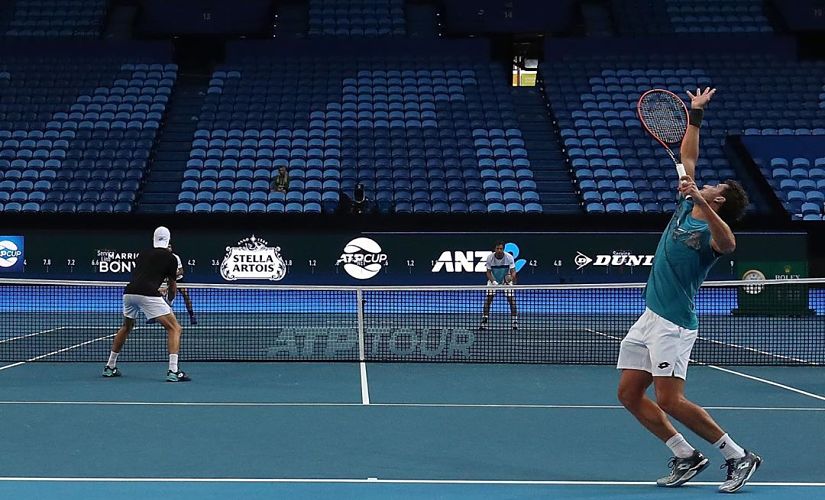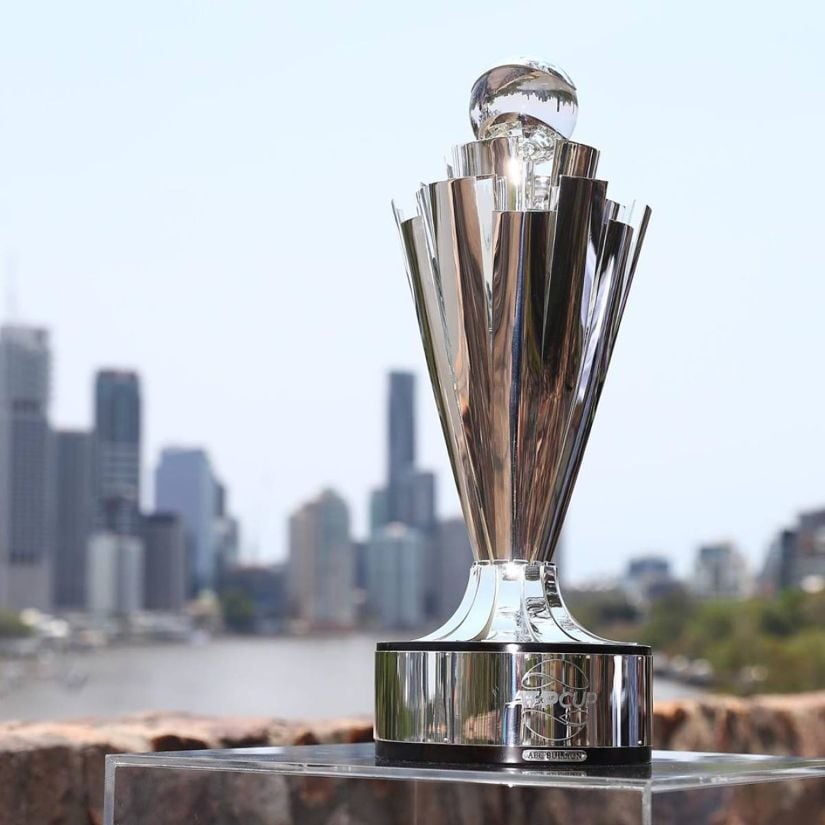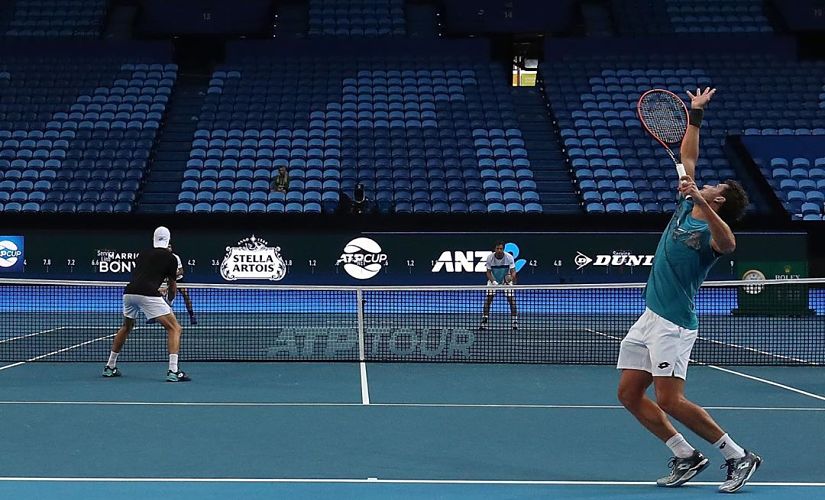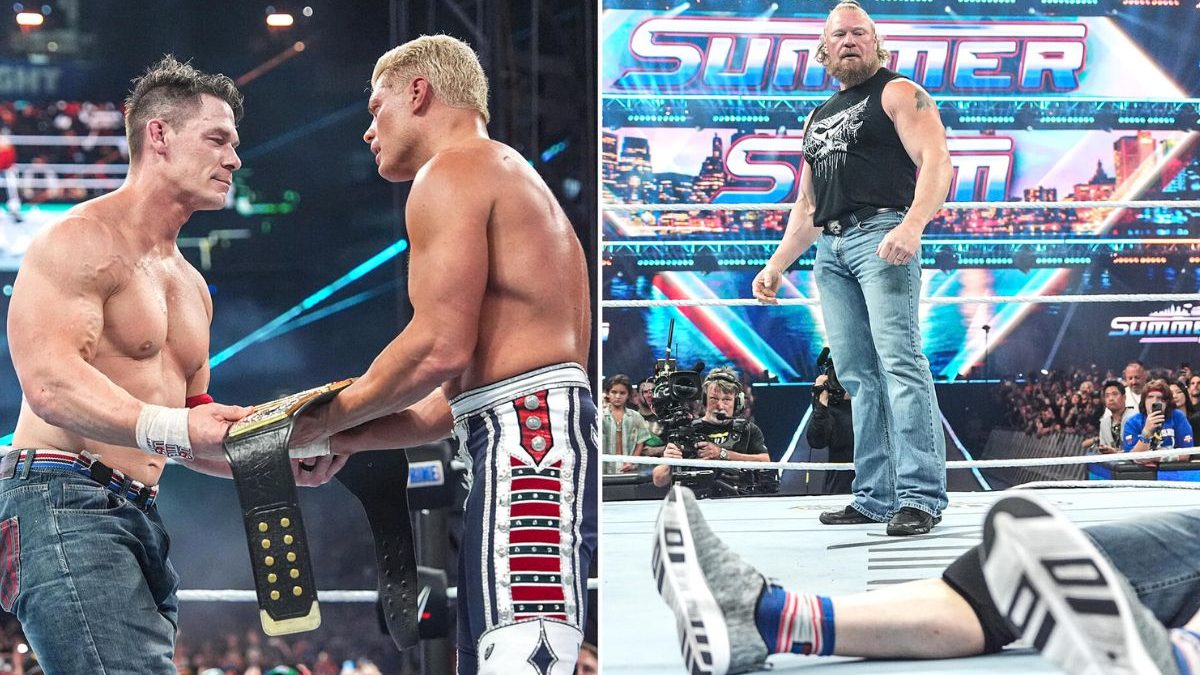If the Davis Cup and Laver Cup weren’t enough for team events on the men’s tennis calendar, ATP Cup joins the list and gets the year going in the tune-up to the Australian Open. What’s at stake? $15 million prize money and 750 ranking points — an option that doesn’t exist in the other two team events. The 24-country event will be played across three cities in Australia and replaces the annual Hopman Cup and Brisbane International. Since the tournament replaces Hopman Cup, there is no women’s team event to start the calendar since 1989. (Brisbane will continue to be part of the WTA calendar) What is the ATP Cup? [caption id=“attachment_7850861” align=“alignnone” width=“825”]  ATP Cup will be played by 24 countries across three Australian cities. ATP Cup Twitter[/caption] ATP Cup is a new tournament on men’s tennis calendar and will be played by 24 countries spread across six groups. It will be played in Brisbane, Perth and Sydney from 3-12 January. The knockouts and final will be played in Sydney. The tournament will be played alongside Doha ATP 250 event. How did the teams qualify for the ATP Cup? ATP announced the top 18 teams for the ATP Cup on 13 September on the basis of the singles ATP ranking of each country’s No 1 singles player. This means Serbia are the top seeds at the tournament as Novak Djokovic was still the world No 1 at that time. Australia, seeded 18th, come in through a wild-card entrance as the hosts. The remaining five teams were announced on 13 November based on the rankings. The criteria for qualification is that a country needs to have at least two players in the ATP singles rankings to be eligible to qualify. With Roger Federer pulling out to add to Stan Wawrinka’s absence, Switzerland have no singles representative and thus been replaced by Bulgaria. Each team can comprise of a minimum of three players and a maximum of five. In the case of a five-member team, the country must have at least three players in the ATP singles rankings. What is the format of the ATP Cup? Much like the Davis Cup Finals which featured 18 countries, ATP Cup has six groups of four teams each with matches taking place in a round-robin format. Group winners and two second-placed teams will move ahead to the quarterfinals in Sydney. What’s new with the ATP Cup?
The tournament will feature VAR (video review) operating courtside to keep an eye out for double bounces, foul shots, touches or invasion. In contrast to the style at Davis Cup and Laver Cup, teams will occupy corners of stadiums, rather than sitting along either side of the chair umpire, and will be armed with technology and statistics to aid on-court coaching, if needed. The biggest change, however, is on-court coaching. The coaching duties can be undertaken by the team captain, the competing player’s individual coach or fellow players. Interestingly, the rules state, “Coaching advice is not limited to changeovers and set breaks, but it shall not interfere with the speed of play” which suggests there might be no controversy like the one witnessed at the US Open in 2018. Unlike the other team events, including the Hopman Cup, singles players can earn 750 ranking points and doubles players 250 points for their performance in the event. An undefeated singles player who plays and wins all possible matches could earn 750 ATP Ranking points. Doubles players will earn 250 for doing the same. The difference between the two will be that the amount of ranking points for wins depends on the ranking of the opponent and the round in singles but there are no limitations in doubles. What are the groups for the ATP Cup?
Group A: Serbia (1), France (9), South Africa (14), Chile (20) Group B: Spain (2), Japan (7), Georgia (13), Uruguay (22) Group C: Belgium (10), Great Britain (17), Bulgaria (19), Moldova (23) Group D: Russia (3), Italy (8), United States (15), Norway (24) Group E: Austria (4), Croatia (11), Argentina (12), Poland (21) Group F: Germany (5), Greece (6), Canada (16), Australia (18) Which players are competing at the ATP Cup? Chile: Cristian Garin, Nicolas Jarry, Alejandro Tabilo, Hans Podlipnik-Castillo, Marcelo Tomas Barrios Vera France: Gael Monfils, Benoit Paire, Gilles Simon, Nicolas Mahut, Edouard Roger-Vasselin Serbia: Novak Djokovic, Dusan Lajovic, Nikola Milojevic, Nikola Cacic, Viktor Troicki South Africa: Kevin Anderson, Lloyd Harris, Ruan Roelofse, Raven Klaasen, Khololwam Montsi Georgia: Nikoloz Basilashvili, Aleksandre Metreveli, George Tsivadze, Aleksandre Bakshi, Zura Tkemeladze Japan: Yoshihito Nishioka, Go Soeda, Ben McLachlan, Toshihide Matsui Spain: Rafael Nadal, Roberto Bautista Agut, Pablo Carreno Busta, Albert Ramos-Vinolas, Feliciano Lopez [caption id=“attachment_7850871” align=“alignnone” width=“825”]  ATP Cup event will be played across three cities. Source: ATP Cup Instagram[/caption] Uruguay: Pablo Cuevas, Martin Cuevas, Ariel Behar, Juan Martin Fumeaux, Franco Roncadelli Belgium: David Goffin, Steve Darcis, Kimmer Coppejans, Joran Vliegen, Sander Gille Bulgaria: Grigor Dimitrov, Dimitar Kuzmanov, Alexandar Lazarov, Alexander Donski, Adrian Andreev Great Britain: Daniel Evans, Cameron Norrie, James Ward, Joe Salisbury, Jamie Murray Moldova: Radu Albot, Alexander Cozbinov, Egor Matvievici, Dmitrii Baskov Italy: Fabio Fognini, Stefano Travaglia, Simone Bolelli, Paolo Lorenzi, Alessandro Giannessi Norway: Casper Ruud, Viktor Durasovic, Lukas Hellum Lilleengen, Herman Hoeyeraal, Leyton Rivera
It’s New Year’s Eve and @DjokerNole is getting those dancing feet moving.
— ATPCup (@ATPCup) December 31, 2019
🎾🕺🏼
🇷🇸 #TeamSerbia | #Brisbane | #ATPCup pic.twitter.com/ScyYdwDUFX
Russia: Daniil Medvedev, Karen Khachanov, Teymuraz Gabashvili, Ivan Nedelko, Konstantin Kravchuk United States: John Isner, Taylor Fritz, Tommy Paul, Rajeev Ram, Austin Krajicek Argentina: Diego Schwartzman, Guido Pella, Juan Ignacio Londero, Maximo Gonzalez, Andres Molteni Austria: Dominic Thiem, Dennis Novak, Sebastian Ofner, Oliver Marach, Jurgen Melzer Croatia: Borna Coric, Marin Cilic, Viktor Galovic, Ivan Dodig, Nikola Mektic Poland: Hubert Hurkacz, Kamil Majchrzak, Kacper Zuk, Lukasz Kubot, Wojciech Marek Australia: Alex De Minaur, Nick Kyrgios, John Millman, John Peers, Chris Guccione Canada: Denis Shapovalov, Felix Auger-Aliassime, Steven Diez, Adil Shamasdin, Peter Polansky Germany: Alexander Zverev, Jan-Lennard Struff, Mats Moraing, Kevin Krawietz, Andreas Mies Greece: Stefanos Tsitsipas, Michail Pervolarakis, Markos Kalovelonis, Petros Tsitsipas, Alexandros Skorilas Who is missing from the ATP Cup players list? Nine of the top 10 players are on board so far (the notable exception being the late-withdrawing Federer) and 26 of the top-30 with Federer, Wawrinka, Andrey Rublev and Jo-Wilfried Tsonga not in contention. Milos Raonic and Brayden Schnur, two of the top four ranked singles players in Canada, will not be competing. Wawrinka, Rublev, Tsonga, Raonic are all set to compete in Doha. Other notable absentees are Andy Murray and Kei Nishikori — both pulling out with injuries and neither competing at the Australian Open which gets underway on 20 January.


)

)
)
)
)
)
)
)
)



